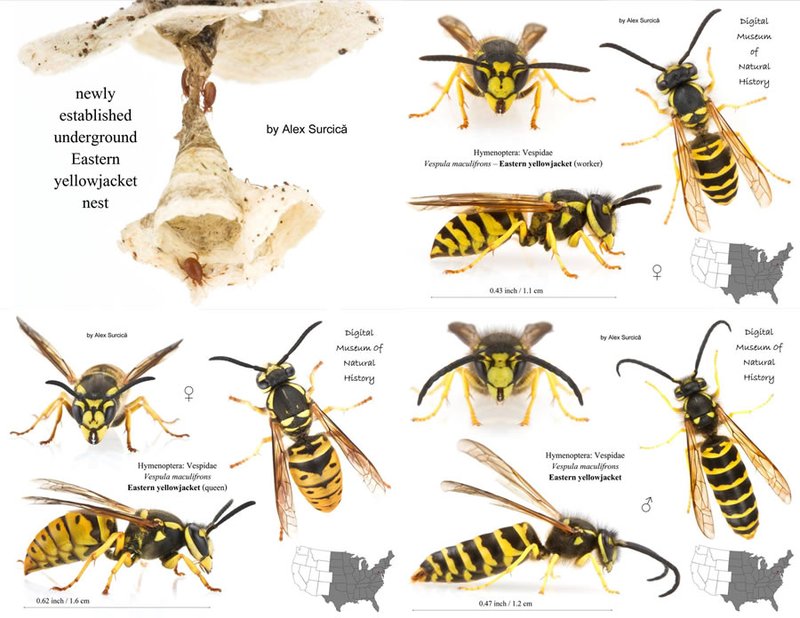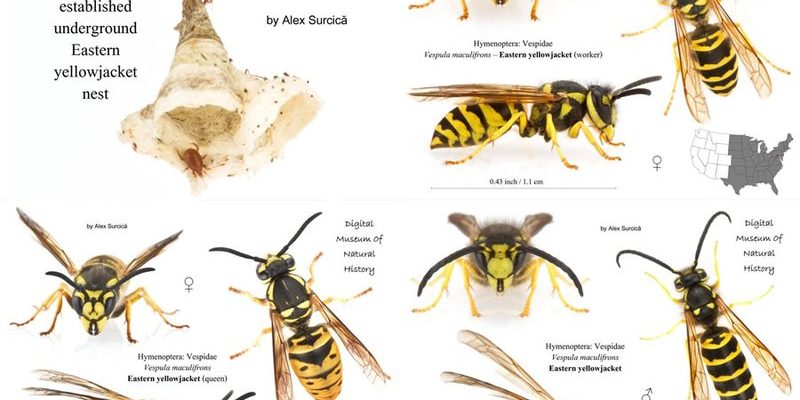
Understanding the lifecycle of a yellowjacket isn’t just about appreciating nature; it also helps you know how to deal with them if they invade your outdoor spaces. These insects play a role in our ecosystems, pollinating plants and controlling pest populations. So, here’s a peek into their journey from egg to adult, shedding light on their behavior and ecosystem importance along the way.
1. The Egg Stage: Where It All Begins
The lifecycle of a yellowjacket begins when a queen lays her eggs. This usually happens in early spring. You might imagine her looking for a cozy spot to start her family, often in a secluded place like an underground burrow or even in old rodent nests. Each egg is tiny, resembling a grain of rice. The queen can lay several dozen eggs in a single day, and she might produce hundreds or even thousands throughout the season.
Once laid, these eggs will hatch into larvae in about a week. At this point, you might be wondering what happens next. The queen is busy caring for these eggs, keeping them warm and safe. The larvae don’t look like yellowjackets at all. Instead, they’re soft and white, almost like little maggots. This stage is crucial, as it sets the foundation for the entire colony.
2. The Larval Stage: Growth and Development
After hatching, the larvae enter a phase of rapid growth. This stage lasts about two to three weeks, depending on the temperature and food supply. The queen feeds them a special diet consisting of a mix of “protein” sources, like insects, and sugary substances. You could think of it like a yellowjacket boot camp—this diet helps them grow strong and healthy.
As they develop, the larvae go through several molts, shedding their skin to accommodate their growing bodies. It’s a fascinating transformation! They’ll eventually spin a cocoon around themselves, which marks the next step in their lifecycle. During this time, they are very vulnerable, so the queen and her worker wasps are constantly on the lookout for danger.
3. The Pupal Stage: Preparing for Flight
Once the larvae are ready, they pupate, transitioning into the pupal stage. Picture this like a caterpillar turning into a butterfly—an incredible transformation occurs here. Inside the cocoon, the larva is undergoing astonishing changes. It’s not just growing; it’s literally rearranging its body to become a mature yellowjacket.
This pupal stage lasts about a week, during which the yellowjacket develops its wings, legs, and body. When they’re finally ready to emerge, it’s like a rebirth. The new adults will break free from their cocoons, stretching their wings for the first time. It’s a bit of a coming-of-age moment for these insects!
4. The Adult Stage: Life in the Colony
Once they’ve emerged as adults, yellowjackets start their lives with a bang. They’ll spend a few weeks enhancing their skills, learning how to forage and socialize with other wasps. Here’s where it gets interesting: young yellowjackets often work hard as foragers, bringing food back to the nest for the queen and other larvae.
As summer progresses, the colony grows larger and more complex. You might see yellowjackets becoming more aggressive, especially in late summer when food sources become scarcer. They’re just trying to survive, after all, and their protective instincts kick in. Understanding this behavior can help you manage encounters during outdoor activities.
5. The Seasonal Cycle: What Happens in Winter?
Come fall, the lifecycle takes a notable turn. As the weather cools, the colony begins to wind down. Most worker yellowjackets die off or become less active, while the queen stops laying eggs. The new queens that were born during the late summer begin to leave the nest to find suitable spots to hibernate.
This is a key moment in the lifecycle because the new queen will remain dormant through winter, hiding in small crevices or beneath the bark of trees. This period of hibernation allows her to survive until spring, when she will emerge, ready to start all over again. It’s a cycle of life that repeats each year, showcasing the resilience of these remarkable insects.
6. The Role of Yellowjackets: More Than Just Pests
You might think of yellowjackets as pesky intruders at summer barbecues, but they play a bigger role in the ecosystem. They’re natural predators, helping to control populations of other insects like caterpillars and aphids. This means they help keep gardens and crops healthy by keeping pest numbers in check.
Additionally, yellowjackets are also pollinators. They visit flowers in search of food, which contributes to the plant’s reproduction process. So, while it’s easy to focus on their stings and aggressiveness during late summer, remember that they have a significant ecological role as well.
7. How to Coexist with Yellowjackets
Now that you know about the lifecycle of a yellowjacket, you might be wondering how to safely enjoy your outdoor activities without attracting these insects. Here are a few tips:
- Keep Food Covered: When dining outside, always cover food and drinks. Yellowjackets are drawn to sweet foods and meats.
- Seal Garbage: Make sure trash cans are tightly sealed to keep scents from drawing yellowjackets in.
- Avoid Scented Products: Sweet-smelling perfumes and lotions can attract yellowjackets, so opt for unscented options.
By taking these precautions, you can enjoy your time outside and reduce the chances of an unwanted encounter with yellowjackets.
8. Conclusion: Nature’s Mighty Workers
Understanding the lifecycle of a yellowjacket—from egg to adult—reveals just how fascinating these insects are. They go through incredible transformations, demonstrating resilience and adaptability. While they can seem bothersome, they contribute to the balance of our ecosystems.
Next time you spot a yellowjacket hovering around your picnic, take a moment to appreciate the complex journey it has made to get there. And while stings can be annoying, knowing a bit more about these creatures helps us live alongside them a little more peacefully. Get out there, enjoy the outdoors, and remember the story of the yellowjacket’s lifecycle—it’s a little miracle happening right before our eyes!

